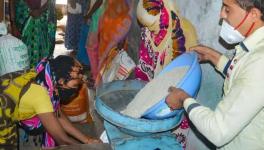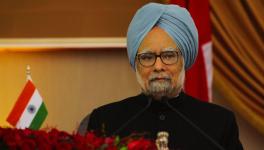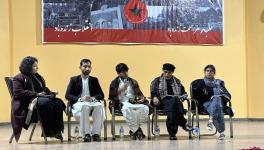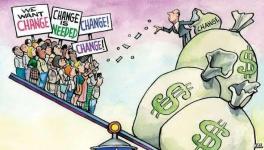How Reforms Made India Suit-Boot Economy
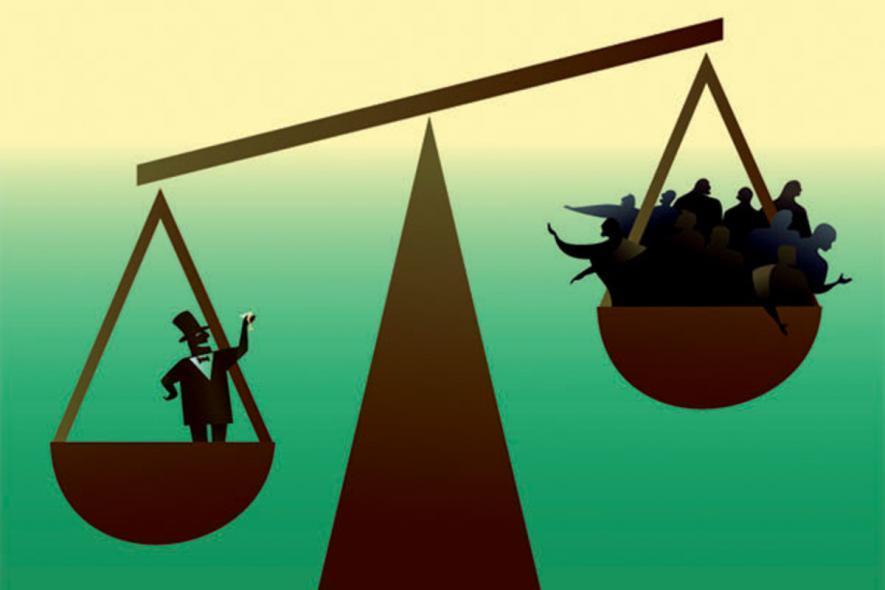
File Photo
When Indira Gandhi was elected for the second time in 1980, she returned to a new world order. The Keynesian welfare state had failed to deal with the oil shocks, inflation and unemployment. It had been replaced by neoliberal regimes in the home countries of capitalism. That was the Reagan-Thatcher era—and Indira wanted to ride it.
She also needed money to repair the economy, which was coming out of recession. So, in 1981, the Indira government turned to the IMF for a loan. The loan came with conditionalities which would reverse India’s economic policy path. But all this would have been kept under wraps had it not been for a scoop managed by the Washington correspondent of The Hindu—a young man called N Ram.
Ram got hold of a confidential IMF document that detailed the changes the Indian government was expected to make. We would recognise them today as the first major steps taken to open India’s economy to international finance and big domestic capital.
The changes included opening reserved sectors to private capital, deregulating monopolies, encouraging foreign trade and liberalising imports, cutting subsidies, reducing fiscal deficits, and reducing taxes on corporates and the rich. Indira would formalise these under Operation Forward, launched in 1982.
So, the real point of departure for pro-market, pro-corporate, neoliberal economic reforms in India was 1982, not 1991. Of course, there is no doubt that the Liberalisation-Privatisation-Globalisation reforms of 1991 were also a watershed event. Before that, the state pretended to be ‘socialist’— the Rao-Manmohan reforms dropped that pretense and openly embraced neoliberalism.
Since then, India has witnessed higher GDP growth and a consumer revolution. It has also seen a massive rise in inequality. Estimates made by the World Inequality Lab, run by the celebrated French economist Thomas Piketty and his colleagues, clearly show 1982 as the turning point—the year when Indira began the reversal of ‘Nehruvian socialism’.
In 1951, the richest 1% of Indians collectively earned nearly 12% of our national income. By 1982, their share dropped to a little over 6%. From 1982, their share began to rise and is now nearly 22%. The exact opposite has happened to the poorest 50% of Indians. In 1951, their share of national income was about 19%, which rose slightly to 21.5% in 1982. Since then, the share of the poorest half has declined steadily and now stands at just 13%.
India’s inequality is too stark for anyone to dispute it even if they question the accuracy of the World Inequality Lab’s calculations. Pink paper pundits, therefore, take a different route to defend India’s neoliberal reforms. They say inequality is an inevitable side-effect of growth. The poor also gained from the reforms; it’s just that the rich gained more. It is better to have inequality where everyone gets enriched than have equality where everyone is poor.
But has everyone been enriched by successive government policies since reforms began? To understand that, we have to see whether the annual real income growth rate improved for everyone in the post-1982 period. Using the World Inequality Database’s estimates, I have worked out the actual income growth rates for various economic segments in the pre-reform and post-reform periods. And the results are revealing.
Between 1951-1982, the poorest 40% of Indians saw an average annual growth rate in their real income (i.e., inflation-adjusted income) of 2.3%. This dropped to 2.1% in the period between 1982-2021. The real income of the middle 40% was growing at 2.1% in the pre-reform (before 1982) period. It remained at 2.1% between 1982-2021.
Things change dramatically from here on. For the top 20% of earners, real income growth rose nearly threefold, from 1.5% per year between 1951-82 to 4.3% between 1982-2021. The increase is even starker for the richest 10%, whose annual real income growth rose more than fourfold from 1.2% between 1951-82 to 5% in 1982-2021.
Finally, the richest 1%. Their annual real income growth rate was negative between 1951-82, which means their annual income fell marginally in the period of ‘Nehruvian socialism’. From 1982, it began to explode—from an annual real income growth rate of -0.2% in the pre-reform period, it rose to a staggering 6.7% between 1982-2021.
India’s real GDP growth averaged 5.9% per year in the same period. This GDP growth was entirely driven by the income gains of the richest 20% of Indians, especially the top 1%.
This data shows that the poorest 40% of Indians would have been better off today without neoliberal reforms. The middle 40% would have lost nothing if the old dirigiste system had continued. The only people who have gained from the economic reforms, which began in 1982, are the top 20% of Indians, and, even more so, the richest 1%. That is how India turned into a suit-boot economy and a suit-boot society.
The writer was a senior managing editor of ‘NDTV India’ & ‘NDTV Profit’. He runs the YouTube channel ‘Desi Democracy’ and anchors a bi-weekly show on ‘Newsclick’ . The views are personal.
Get the latest reports & analysis with people's perspective on Protests, movements & deep analytical videos, discussions of the current affairs in your Telegram app. Subscribe to NewsClick's Telegram channel & get Real-Time updates on stories, as they get published on our website.











